Temperature controllers for heating - the basis of "smart"
It would be much easier if the same temperature was kept on the street at all times of the year, then there would be no need to adjust the heating. But in winter, severe frosts are replaced by thaws with a positive temperature and vice versa, it is clear that the heating system must adequately respond to weather surprises.

Ways to adjust the heating
Any task, as a rule, has several ways to solve it; adjustment of the heating operation is not an exception.
We can distinguish the following adjustment methods:
- the simplest option is to install a special regulator in front of each radiator. Such thermostats for home heating can be used in all, without exception, heating systems, and the principle of operation is that the coolant current through the battery is regulated;
Note! In a number of cases, for example, in urban apartments, this adjustment method is the only available one.
- if the basis of the temperature controller operation is data on the change in air temperature in the room (or outside), then the adjustment of the boiler operation provides for a change in the temperature of the heat carrier. In this case, the regulating device is located directly at the boiler;
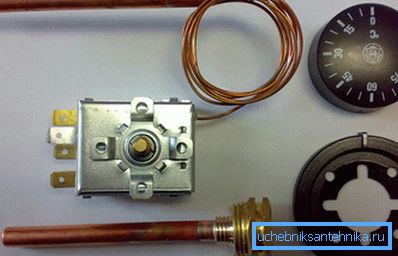
- "Smart" circulation pumps with a slight stretch, but also can be classified as heating regulators. If a conventional regulator is installed on the radiator, then the pump is located directly at the boiler (in the pipeline supplying the cooled coolant). The adjustment process is performed by changing the speed of rotation of the pump rotor.
Of these methods, the first is considered the most flexible, as it allows you to change the temperature not only in a single room, but also in individual radiators. The remaining 2 ways change the operation of the heating system as a whole, that is, the temperature will change immediately in all the rooms in the house.
Temperature controllers for radiators
Such devices are a thermal head, which is installed on the site of the supply pipe directly in front of the battery. The principle of operation is simple - when the temperature in the room exceeds a predetermined limit, the device simply slightly reduces the internal diameter of the pipe, and the volume of coolant entering the battery decreases accordingly.

The simplest manual regulator is an ordinary tap, in which case adjustment will have to be done manually. But more often used automatic models.
Types of thermostats
If the principle of operation is chosen as the main criterion, then all devices of this type can be divided into mechanical and automatic. In mechanical man regulates the temperature with his own hands, constantly turning the valve, in automatic - after setting the device works itself.
You can also give a classification by location of the sensor.
There are 3 options:
- the temperature sensor is located directly in the thermal head (in this case, you need to especially carefully monitor the installation of the regulating device, because there is a heating radiator nearby);
- the sensor is placed a couple of meters - it allows you to more accurately regulate the work of heating;
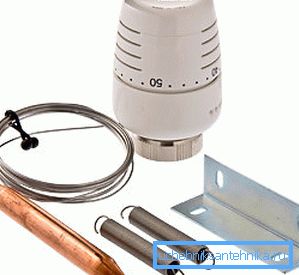
- The sensor is placed outside - as a result, we get a weather-dependent heating controller. It will instantly respond to changes in temperature outside.
Note! When using indoor temperature sensors, there is always a time gap between changing weather conditions on the street and changing the operating mode of the heating. The use of external thermal sensors solves this problem.
Device, principle of operation and preparation of the thermostat to work
Thermostats for radiators operating in automatic mode use the property of liquids and gases to expand and contract when heated / cooled. In the head there is a hermetic chamber (bellows) in which there is a working fluid or gas.
The wall of the bellows is made corrugated, so that when the internal volume changes, it is extended or shortened. Due to this, there is a change in the lumen in the pipe that supplies the coolant to the radiator.
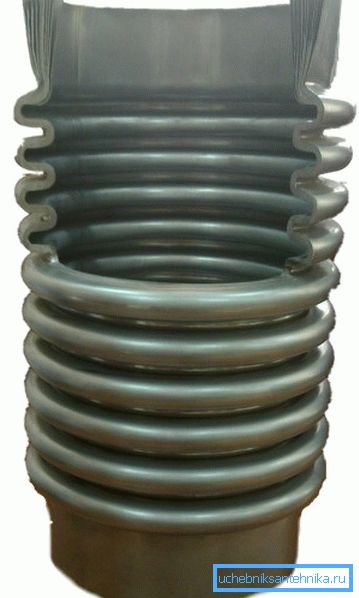
The diagram below shows the thermal head device of Danfoss. It is seen that when the bellows is lengthened, the valve will partially block the feed pipe.
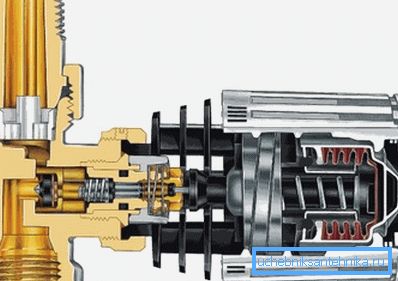
Even when using automatic devices, you will need to pre-adjust.
The heating radiators are adjusted in this order:
- First you need to ensure a smooth flow of coolant into the radiator, so the valve opens completely;
- as soon as the room temperature exceeded the required value by 5-7? С the valve closes fully;
- now you just need to wait until the room temperature drops to the desired value;
- as soon as the temperature has become comfortable, you can slowly open the valve until the radiator becomes warm and the sound of water is heard. We can assume that the thermostat for radiators is set up and ready to go.
Convectors adjustment
Quite often, instead of the usual batteries for floor heating are used vnutripolnye convectors. A feature of such devices is that they install a fan to improve air exchange.
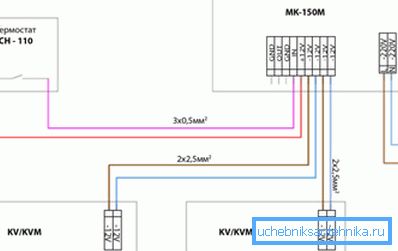
The speed controller of the heater fan allows to reduce the amount of air passing through the fins of the convector, due to which the temperature in the room changes. Without adjusting devices, the fan always operates at 100% revolutions.
In advanced models, after the temperature in the room drops by 1.5? C, the fan is turned on and, due to the blower, increases the heat transfer rate of the heater. Moreover, one regulator can simultaneously work with several fans.
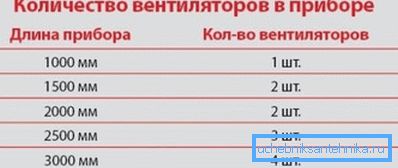
Boiler adjustment
In private houses, to change the operating modes of heating in a wider range, you can use devices that regulate the operation of the boiler as a whole. This will reduce the temperature of the coolant in the system and solve 2 problems at once: save on fuel and get the optimal temperature in the rooms.
Devices to adjust the operation of the boiler
Such heating regulators consist of 2 blocks:
- 1st block - consists of a thermal sensor, which can be placed both in the room and on the street. Placing it on the street has a number of advantages, in particular, the speed of the system’s response to changing weather conditions increases;
- 2nd block - proper adjustment device, located in the immediate vicinity of the boiler. Between themselves, both units are connected by a metal wire.
The principle of operation of the device is based on the fact that the electrical characteristics of the conductors change with a change in their temperature. The main working element of the thermostat is a thermocouple or a thermistor.
The principle of their work is somewhat different:
- electric thermostats of heating with the use of thermistors record the change in resistance of the thermistor;
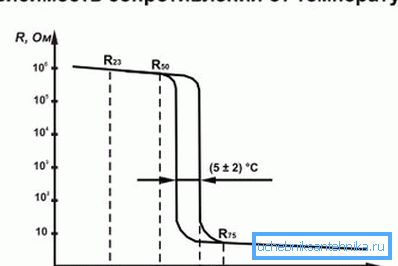
- There are devices that use a thermocouple - that is, a plate welded from 2 different metals. The types of metals are selected in such a way that a sufficiently high potential difference arises at the junction, with a change in the temperature of the soldering point, the potential difference also changes.
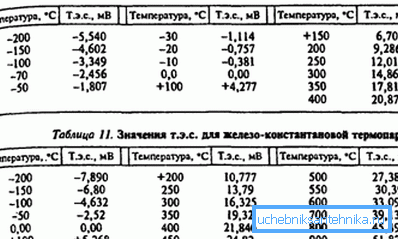
This thermostat allows you to control the temperature in a wide range, regardless of the power of the heating system. It can be used both in private construction and in multi-storey buildings, a cascade of thermistors allows in this case to create an intelligent heating system.
Examples of devices governing the operation of the boiler
Such devices vary greatly depending on the complexity of the design, the possibility of programming behavior on different days and at different times of the day, as well as the accuracy of temperature control.
You can bring several models in order of increasing complexity and cost:
- room heating controller VRT 40 - can be called one of the simplest devices for adjusting the operation of the boiler (belongs to the class of analog electric controllers). The temperature mode is set manually, and the temperature sensor is located directly in the room. In addition to several temperature modes, there are no additional settings;
- automatic heating controller Calormatic 430 - provides an order of magnitude more opportunities for temperature control. Refers to electronic controllers with closed logic (that is, you can use only the modes of operation provided by the manufacturer). This device is about 13-15 times larger than the model VRT 40;

- Vzlyot-RO 2 - among the devices on the market for adjusting heating can be called a leader in the flexibility and accuracy of regulation. In addition, the user can set an arbitrary mode of operation, because this device is produced with open logic, that is, it can be reprogrammed. True, there is a downside to this - the average consumer is unlikely to want to tinker with the fine settings, and the price will make you think twice before buying.
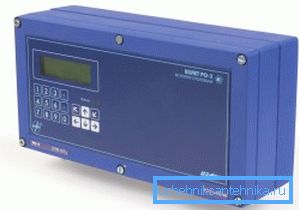
Devices like the latter in the list are most often used in industry in premises where temperature conditions are of particular importance. In addition to simple adjustment, such devices allow them to be used for collecting statistics and even for research and development purposes, while conventional thermostats for radiators are unsuitable for these purposes.
Adjusting the operation of solid fuel boilers
In a gas or electric boiler, the control unit regulates either the heating temperature of the heat exchanger (electric boiler) or the frequency and duration of the gas burner (gas boilers). In the case of solid fuel boilers, the process of burning the fuel cannot be interrupted every 20-30 minutes, and therefore a different principle is needed to adjust their operation.
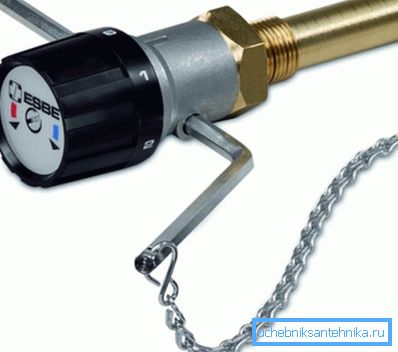
The rate of combustion of the fuel, and hence the intensity of generation of thermal energy depends on the rate of combustion of the fuel, and this parameter is directly affected by thrust. The draft regulator for solid fuel boilers changes the volume of fresh air entering the combustion chamber and thus regulates the operation of the boiler as a whole.
During operation, such a device constantly monitors the temperature of the coolant (for this purpose, an immersion hollow sleeve is used), and the actual change in the position of the boiler valve is performed through a mechanical transmission.
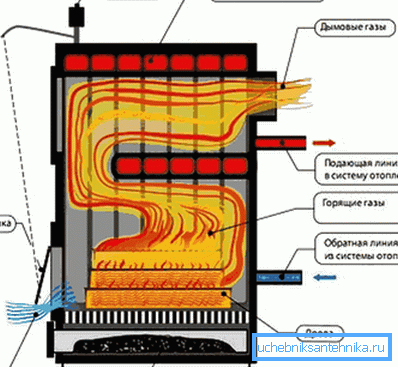
After installation, you need to configure the regulator, the instructions for configuring it look like this:
- turning the knob to set the desired temperature;
Note! If the device is installed horizontally, then you need to use a red scale, if it is vertical - yellow.
- after that it is necessary to flood the boiler and bring the temperature to the required one;
- then the chain is put on the valve. It is important that it does not sag, the maximum reserve of free wheeling should not exceed 1 mm.

Such a thermostat for heating will change the size of the gap through which fresh air enters. As soon as the temperature exceeds the required one, the thermostat through the system of levers lifts the circuit a little, and with it the damper also increases the flow of air, and hence the combustion process proceeds more intensively.
Adjusting the heating with a circulating pump
In the past, unregulated pumps were used, that is, there was no way to regulate the coolant current through the pipes. Nowadays, such rarities can be found only in old buildings, and in most cases, they are replaced by adjustable circulating pumps.
If a conventional regulator to a heating radiator changes the coolant current in a separate radiator, then a change in the operating modes of the pump affects the efficiency of the entire heating system. For example, at night the rotor speed decreases, because there is no need for intensive heating.

More complex models make it possible to customize the mode of operation of the device on days of the week, as well as on the time of day. Available operating modes are “Party”, “Vacation”, “Weekend”, etc.
The scheme of the heating system provides for installation of the pump directly in front of the boiler in the pipeline section with the cooled coolant. If you try to install it at the outlet of the boiler, the high temperature of the coolant will significantly reduce the durability of the pump.
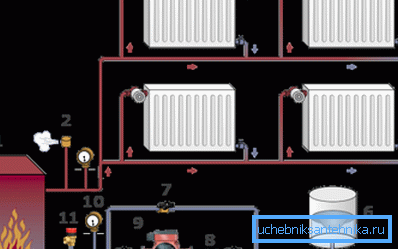
Summarizing
Heating radiators with a thermostat allow you to create a truly “smart” heating system that adapts to changes in weather conditions. Meanwhile, battery regulators are far from the only way to adjust the operation of the heating system. The proposed material - an attempt to summarize the existing ways to adjust the heating in the house.
The video shows an example of connecting the thermostat to the boiler.